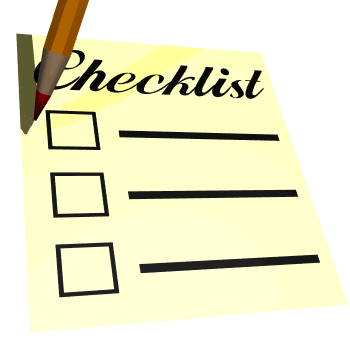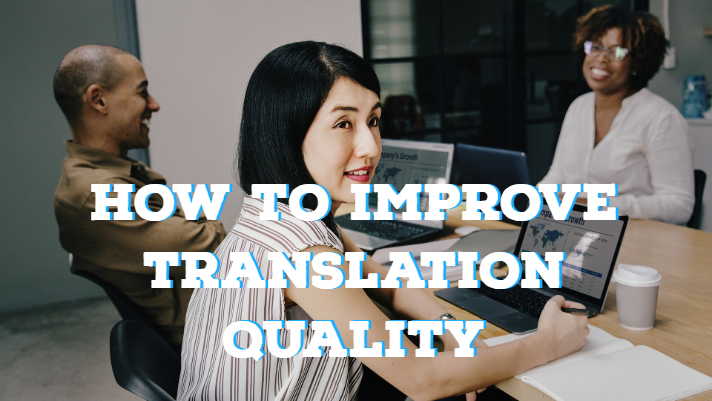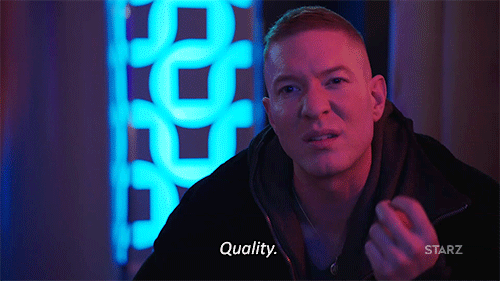[vc_row][vc_column][vc_column_text]Far too often, translators and translation services equate translation quality with checking for errors. In other words, the quality assurance process starts after the work has been translated and consists of checking and editing, whether by a third party or the original translator.
This is woefully inadequate when it comes to ensuring top quality for translations. In order to ensure a high level of quality for a translation project of anything other than very minor scope, the QA process needs to begin at the very start of the project and extend to the point at which finished translations are delivered to the client.
The following represents an ideal lifecycle for a professional translation project and offers a blueprint for how to improve translation quality.
Translation Project Lifecycle
The lifecycle of a translation project should have a number of steps that ensure proper quality. This template might vary depending on the specific needs of a project, and shouldn’t be taken as an absolute ‘it must be done exactly this way’. However, this general template is a solid foundation for executing and delivering a high-quality translation project.
Initial Evaluation and Planning
One of the biggest factors in executing a high-quality translation project comes before a single word is translated.
Diving right in and beginning to translate may seem like the most time-efficient and easiest option, but to do so risks a number of problems.
Before anyone starts work on a translation, a member of the translation provider’s team should review the source material thoroughly for any obvious errors, inconsistencies, typos or gaps in the text. This can be described as the document prep stage. He or she should also make note of any areas that might require further client instruction. Resolving all of this up-front rather than piecemeal as the translation is being produced will end up saving time in the long run in many cases, and also ensures that the translator can work smoothly once the project actually begins.
As the source materials are being reviewed, another guarantor of quality is to create an organized checklist that covers the structure and requirements of any and all deliverables. This governs everything from establishing the file names and directories of deliverables, the formatting of the content within the files, and the authorization process on the client end.
It’s frequently helpful to have two parties working on this from the translator’s end: One handling the source material review and any questions arising from that, and one managing the structure of the project and setting up the checklist and expectations for delivery. By splitting the work out, it allows each team member to focus on that aspect more closely, decreasing the likelihood of error.
A well-executed initial planning and evaluation phase sets a translation project up for success, and in almost all cases will result in a better quality deliverable at the end of the project. In the pre-planning stage, costs can be cut down as well. Translation cost savings can be implemented by planning for translation ahead of time.
Documentation and Reference Materials
For many translations, it’s highly advantageous for the client to provide certain reference materials and documentation for the linguist to refer to while translating. Providing these references and documentation can dramatically increase the quality of a translation by taking a lot of the linguist’s guesswork out of the equation.
A common and vitally useful reference is a glossary and/or style guide. A glossary will contain words that might have a variable meaning to clarify what meaning should be conveyed in the translation. Another useful glossary function is to highlight brand names, products or any other words that should remain in the original language as the rest of the text is translated. A glossary can also serve as a source of some of the keywords or terminology that matters most to the original text, ensuring that the linguist translates it precisely according to expectation.
A style guide gives a translator an understanding of things such as the tone of the translation, grammar and punctuation requirements, or any other guidelines that will ensure the translation matches client expectation. Often times, a client can provide an example of a previously translated work or a work stylistically similar to the desired translation for reference.
Finally, some works of translation can be extremely technical, and reference materials covering the ins and outs of that technical subject can increase translation quality considerably. In the case of translation projects of high technical complexity, it’s often recommended that a client provide a subject matter expert (SME) with whom the translator can consult on matters relating to the areas of the text heaviest in technical content.
All of this reference material can be the difference between a translation deliverable lacking in context and desired style and one best suited to client expectation.
The Translation Process
Inevitably, any human translator will make some errors during the translation process. This might be as simple as spelling or punctuation mistakes to more complicated or consequential errors like non-standard grammar or incorrect/imprecise word choice.
To minimize errors of this kind and eventually eliminate virtually all of them, the linguist translating a work should follow a multi-step translation process.
First of all, the initial translation – The translator creates a copy of the original source material in the new language. At this point, it’s almost certain that some errors will exist. The translator will now review his or her work on two distinct fronts.
The first of the two reviews will be editing. The editing will focus on spelling, punctuation, individual word choices or the meaning of individual words or phrases, and any similarly granular issues.
Then, the translator will proofread the work. In the proofreading phase, the focus will be on the big picture. The overall flow and tone of the piece, the structure of individual or grouped sentences or paragraphs, and similar types of considerations.
By splitting the review phase into two groups in this matter, the translator has a far greater likelihood of not overlooking or missing any necessary corrections.
It should be noted that for this process to work at optimal levels, it’s necessary for the translator to take some time between translating and reviewing the work. When a work is freshly translated, translators tend to read what ‘should be’ there rather than what actually is there. They’ll gloss over a number of inaccuracies or errors. While it may result in a longer project time, giving them time to rest before undertaking a review will increase translation quality.
Third Party Review
For simpler translation projects, it’s possible that steps one through three will be adequate to produce a high-quality translation. However, for projects of mid to high levels of complexity or scope a review by a third party is highly recommended.
The after-translation review should be done by someone who has previously not reviewed the translation at all so that he or she comes into the project with fresh eyes to spot any errors or issues. This third-party reviewer will clean up nearly everything that might have slipped by the original translator.
In cases of technical translation, the third party reviewer often times should be someone expert in the field in question for maximum accuracy and quality.
Formatting
Often times further formatting will need to be done on complex projects with several file types. When translating from one language to another, word length can vary drastically. If text boxes that otherwise fit now don’t because the length of words has increases, the original file needs to be reformatted to look as good as possible.[/vc_column_text][ult_buttons btn_title=”Tweet About How To Improve Translation Quality” btn_link=”url:https%3A%2F%2Fctt.ac%2FqKpUw|||” btn_align=”ubtn-center” btn_title_color=”#ffffff” btn_bg_color=”#dd9933″ btn_bg_color_hover=”#81d742″ icon_size=”32″ btn_icon_pos=”ubtn-sep-icon-at-left” btn_font_size=”mobile_landscape:15px;mobile:15px;”][vc_row_inner][vc_column_inner][vc_column_text]
Delivery
In some projects, the delivery is as simple as a single document of the translated text. However, for more complex projects a deliverable can comprise multiple files in varying formats, voice recordings and other supplemental materials.

This is where creating a deliverable checklist in the pre-translation planning phase will pay dividends. Having a separate project manager to take ownership of the deliverable details takes a burden off the plate of the translator, further reducing the possibility for error.
Following the above project, lifecycle offers quality improvement strategies at multiple phases of the project. From the importance of pre-planning in setting up a blueprint for success to establishing a thorough and robust QA process after the translation is completed, these suggestions offer a guideline on how to improve translation quality.
Using A Translation Management System
The whole translation process has a lot of stakeholders involved including but not limited to, clients, subject matter experts, translators, project managers, and secondary reviewers.
Without using a translation management system or TMS, this would be a lot of back and forth of files sharing and communication.
A cloud-based and centralized TMS will allow all parties to work on a project within the platform. This streamlines workflows and allows all stages of a translation project to be reviewed and managed.
There are also many other benefits that translation management systems offer. A good TMS will utilize leading technology to significantly cut costs, improve quality, and save time.
Here are some of the benefits of utilizing a modern TMS:
Supports Any Content-Type: Documents, websites, software, mobile applications, and more are translated and localized rapidly and cost-effectively with greater efficiency.
Seamless Connections To Other Technologies: A good TMS should support 100+ file types and feature pre-built integrations and APIs, allowing for effortless connections to any other platform, content management system, or technology stack.
UNIFIED Project Collaboration: Real-time multilingual glossaries and in-context review that allow translators, reviewers and project managers to communicate and collaborate together, resulting in unparalleled abilities that ensure the absolute best quality, consistency, formatting, and contextual accuracy.
Centralized Translation Memory: With a centralized translation memory database, there are no fees for repeat content that has already been translated – all of which provides significant long-term savings and quality improvements for the end-user.
Client Review Module: The client review module tracks every type of change that’s been made and provides a measurable overall quality score which means users never have to guess what changes were made and why.
Want to learn from top industry experts on how they manage translation quality control?
inWhatLangauge hosted an experience talks event with experts sharing their best practices and how to manage quality for their international brands.
Panelists include:
Peter Smith, former CEO of a Top 10 Language Services Company
Greg Perkins, Manager of Language Quality, The Church of Jesus Christ of Latter-day Saints
Ed Watts, Principal Localization Engineer, Oracle
Abel Atwater, Director of Operations, inWhatLanguage
Their discussion was published on the global growth podcast for you to learn from. Listen in and learn about translation quality!
Get started with a high-quality human translation! Partner with inWhatLanguage and start your global success story! inWhatLangauge is on a mission to break down language and cultural barriers by combining a global network of human linguists and advanced translation technology.
inWhatLanguage offers quality translations for any content type in over 200+ languages.[/vc_column_text][/vc_column_inner][/vc_row_inner][/vc_column][/vc_row][vc_row][vc_column width=”1/6″][us_separator size=”custom” height=”32px”][/vc_column][vc_column width=”2/3″][vc_video link=”https://youtu.be/pjVadQIFZig” video_title=”1″][/vc_column][vc_column width=”1/6″][us_separator size=”custom” height=”32px”][/vc_column][/vc_row][vc_row][vc_column][ult_buttons btn_title=”Get A Free Quote For Your Translation Project” btn_link=”url:https%3A%2F%2Finwhatlanguage.com%2Ffree-quote%2F|||” btn_align=”ubtn-center” btn_title_color=”#ffffff” btn_bg_color=”#dd9933″ btn_bg_color_hover=”#81d742″ icon_size=”32″ btn_icon_pos=”ubtn-sep-icon-at-left” btn_font_size=”mobile_landscape:15px;mobile:15px;”][/vc_column][/vc_row]





Recent Comments